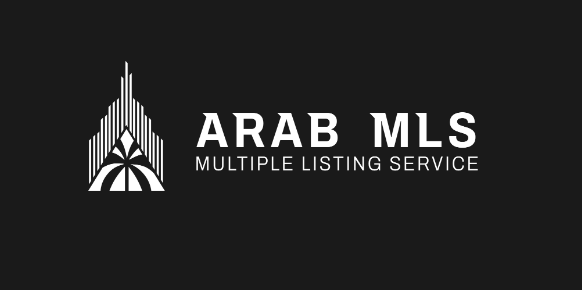Multiple Listing Services (MLS) are vital systems that provide real estate professionals with access to property listings, market data, and other critical information. These systems allow brokers and agents to share, retrieve, and update real estate listings across a network. However, in order for MLSs to communicate effectively with each other, as well as with third-party tools and services, they need to use standardized data exchange protocols.
Data exchange protocols are essential for ensuring that MLS systems can share information in a reliable, consistent, and secure manner. Without these protocols, data may be inconsistent, outdated, or incompatible, leading to errors and inefficiencies in the system. In this article, we’ll explore the key data exchange protocols used in MLSs, their roles, and their impact on the real estate industry.

What Are Data Exchange Protocols?
In the context of MLS, data exchange protocols refer to the rules and guidelines used to transmit data between different systems. These protocols determine how data is formatted, how it is transmitted, and how systems interpret it. Essentially, they ensure that data remains intact and usable as it moves between platforms.
The role of a data exchange protocol in MLS is to ensure that:
- Data remains accurate and consistent during transmission.
- Systems on both ends of the data exchange understand and process the information correctly.
- Data security and privacy regulations are adhered to.
Data exchange protocols can be complex, involving several layers of communication, encryption, and data structuring. However, the goal remains simple: to enable smooth and secure data sharing between MLS platforms, third-party applications, and external systems.
Key MLS Data Exchange Protocols
Several protocols have been developed over the years to help MLS systems communicate effectively. Some of the most common data exchange protocols include:
- RESO Web API (Real Estate Standards Organization Web API)
- RETS (Real Estate Transaction Standard)
- IDX (Internet Data Exchange)
- FTP/SFTP (File Transfer Protocol/Secure File Transfer Protocol)
- XML (Extensible Markup Language)
Each of these protocols plays a crucial role in how data is shared across MLS systems. Let’s explore these protocols in more detail.
1. RESO Web API
The RESO Web API is perhaps the most modern and widely used protocol for MLS data exchange. Developed by the Real Estate Standards Organization (RESO), this API aims to standardize how MLSs exchange data.
RESO’s Web API is based on REST (Representational State Transfer) principles, a set of rules for designing networked applications. REST APIs use HTTP to request data and are designed to be stateless, meaning each request from a client to a server must contain all the information necessary to understand the request.
The key features of the RESO Web API include:
- Data standardization: By adhering to RESO’s Data Dictionary, the Web API ensures that data is uniformly structured, reducing confusion when sharing between MLSs or third-party services.
- Real-time data exchange: The API allows for real-time data retrieval, ensuring that MLS listings are up-to-date and reflect the most current information.
- Security: The RESO Web API supports authentication protocols like OAuth to ensure that data exchanges are secure and authorized.
With the RESO Web API, MLS systems can easily integrate with third-party services like CRM platforms, marketing tools, and mobile apps. This has significantly improved the efficiency and flexibility of MLS data exchange, allowing for seamless integration with a wide range of systems.
2. RETS (Real Estate Transaction Standard)
RETS was developed in the late 1990s and served as the standard for MLS data exchange for many years. Although it has been largely replaced by the RESO Web API in many MLSs, RETS is still used in some regions and is important in understanding MLS data exchange history.
RETS uses XML to transmit data and supports a wide range of real estate transactions, including property listings, sales data, and agent information. It provides the following benefits:
- Flexibility: RETS can handle both real-time and batch data exchanges, allowing MLS systems to update data on a scheduled basis or whenever necessary.
- Customization: RETS allows MLS providers to include custom fields and specialized data that may not be covered by a standardized dictionary.
- Legacy support: For MLS systems still using RETS, the protocol provides a reliable way to exchange data between MLSs and third-party applications.
However, RETS has some limitations compared to newer protocols like the RESO Web API. It tends to be more complex and less efficient, and it does not offer the same level of integration with modern applications.
3. IDX (Internet Data Exchange)
IDX is a protocol used by MLSs to syndicate listings to external websites, particularly real estate agents’ and brokers’ websites. It allows MLS participants to display a subset of listings on their websites, ensuring that their properties are visible to the public while still adhering to MLS rules and guidelines.
Key characteristics of IDX include:
- Syndication: IDX allows real estate professionals to share MLS data with external websites, increasing the visibility of their listings and driving traffic to their sites.
- Compliance: IDX ensures that MLS rules and regulations, such as copyright and listing display requirements, are followed.
- Customizability: IDX feeds can be customized to display different subsets of listings, such as properties in a specific price range, location, or category.
IDX feeds are typically used by real estate agents, brokers, and other real estate professionals to maintain their online presence and attract potential buyers. By using IDX, agents can share MLS data on their websites while maintaining control over how listings are displayed.
4. FTP/SFTP (File Transfer Protocol/Secure File Transfer Protocol)
FTP and its more secure version, SFTP, are commonly used protocols for transferring data between systems. In the context of MLS, FTP and SFTP are often used for batch uploads and downloads of large datasets, such as property listings, images, and documents.
Key features of FTP/SFTP include:
- Batch processing: FTP and SFTP are well-suited for transferring large volumes of data at once, making them ideal for periodic MLS updates.
- Security: SFTP encrypts data during transmission, ensuring that sensitive MLS data is protected from unauthorized access.
- Compatibility: FTP and SFTP are widely supported across platforms and can be integrated into existing MLS systems with relative ease.
While FTP and SFTP are less commonly used for real-time MLS data exchange today, they remain useful for tasks like bulk data migration and periodic updates.
5. XML (Extensible Markup Language)
XML is a flexible data format commonly used for structuring and transmitting data. In the context of MLS data exchange, XML is often used to define the structure of MLS listings, including property features, agent details, and transaction history.
XML offers the following benefits:
- Human-readable: XML data is easy for both machines and humans to read, making it easy to troubleshoot and work with.
- Customizable: XML allows MLSs to create custom tags and fields, enabling them to meet specific business needs or local requirements.
- Interoperability: XML is widely supported and can be used with a variety of protocols and platforms, making it an effective solution for exchanging data between systems.
While XML has been somewhat replaced by newer formats like JSON in modern APIs, it is still a key part of the MLS data exchange landscape, especially for legacy systems.
Benefits of MLS Data Exchange Protocols
The implementation of robust data exchange protocols brings numerous benefits to MLS systems, real estate professionals, and consumers. These include:
- Increased efficiency: Data exchange protocols automate the process of updating and sharing MLS data, saving time for brokers, agents, and developers.
- Improved data accuracy: By using standardized protocols, MLSs can ensure that their data is consistent and accurate, minimizing errors that could result in missed opportunities or legal issues.
- Better integration: Data exchange protocols enable MLS systems to connect with third-party applications, CRM systems, and marketing tools, improving the overall functionality of the real estate ecosystem.
- Enhanced security: Modern protocols, such as SFTP and the RESO Web API, offer encryption and secure data transmission, protecting sensitive real estate information from unauthorized access.
Conclusion
MLS data exchange protocols play a crucial role in the smooth operation of the real estate industry. They ensure that MLS systems can effectively communicate with each other, third-party applications, and external platforms. By adopting modern standards like the RESO Web API, MLSs can enhance data accuracy, streamline operations, and improve the user experience for agents, brokers, and consumers.
As technology continues to evolve, MLSs will need to stay current with emerging data exchange protocols to maintain competitiveness and meet the growing demands of the real estate market. The future of MLS data exchange is likely to see even more integration with AI, mobile apps, and other innovations, further improving the way real estate professionals access and share information.













